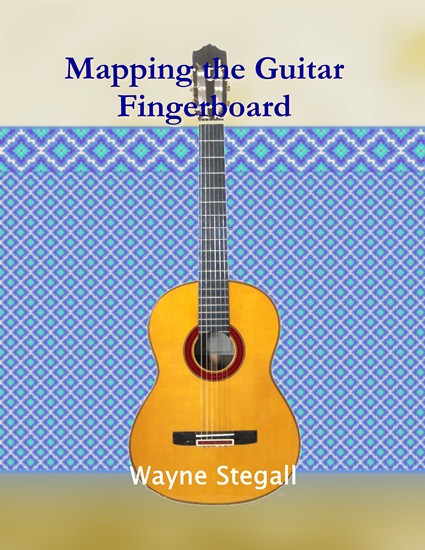 |
| Home │ Guitar
Home Page |
Copyright © 2017 by Wayne Stegall
Created December 27, 2017. See
Document History at end for
details.
Mapping the Guitar Fingerboard
New Book
 |
Mapping the Guitar Fingerboard
|
From first pages of the book:
Introduction
In Frederick Noad’s book Solo Guitar Playing One,1 he said
After a search for classical guitar materials to implement how I interpreted his suggestions and finding none, I wrote my own. To his suggestion to learn notes at each fret across the strings, I thought it best to play C-key patterns across the strings that encompassed two frets instead because the varying patterns involved seemed to have more mnemonic value than straight patterns with accidentals. Then learning the notes up and down the strings would complete the task perpendicular to way it began. These exercises I called vertical and horizontal note patterns. To implement his suggestion to play equivalent notes – that is to play each note on all the strings on which it resides – I decided to play triplets in all their positions instead. As a result the many string crossings that occur would connect knowledge gained on each string with those adjacent and also generally impart a more thorough knowledge by giving each played note a context. This exercise I called mapping.
I played vertical and horizontal note patterns and mapping in the key of C until I felt I could advance by playing mappings in other keys. However playing twelve keys seemed much, therefore I chose to prepare learning materials for those keys with all sharps or flats only: C♯ and C♭. These turned out so helpful that returning to practice the key of C seemed trivial.
Originally, I wrote exercises to master those positions easily accessible to a classical guitar without a cutaway, which is to positions allowing a reach to fret 12 and little beyond. However, for a complete book, I added the same exercises beginning higher to reach fret 19 of the classical guitar and fret 24 of the electric guitar. For those who do not read standard music notation I repeated all of the exercises in scientific music notation as well.
|
|
1Frederick M. Noad, Solo Guitar Playing One, (New York:
Schirmer Books 1994), p. 159.
Document History
December 27, 2017 Created.